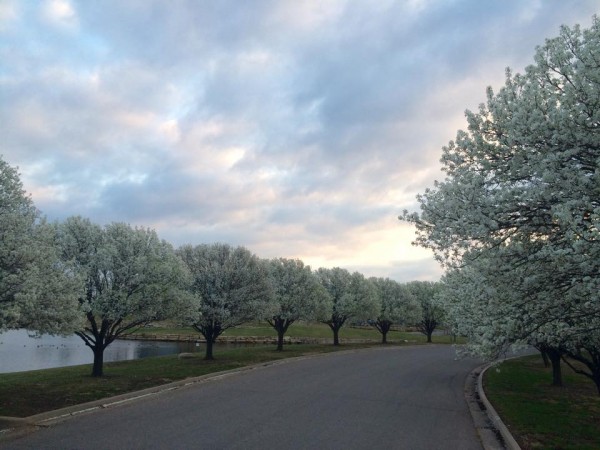Maintaining healthy trees in Kansas City’s diverse climate requires careful attention and proper care throughout the year. As experienced arborists, we’ve compiled essential tips to help you keep your trees thriving in every season.
Seasonal Tree Care Guide
Spring: Awakening Your Trees
Spring marks the perfect time to assess winter damage and prepare your trees for the growing season. Start with a professional inspection to identify any issues that developed during the cold months. This is also the ideal time to apply a fresh layer of mulch around your trees, keeping it away from the trunk to prevent moisture-related problems. As temperatures rise, establish a regular watering schedule to support new growth. For guidance on native tree species and planting times, check out the K-State Research and Extension office for Johnson County.
Summer: Nurturing Through Heat
Kansas City summers can be challenging for trees. The key to summer care is consistent deep watering, especially during dry spells. Pay special attention to newly planted trees, which need extra water to establish strong roots. Regular monitoring helps catch any signs of pest infestation early, while selective pruning maintains shape and promotes healthy growth. After storms, inspect your trees for any damage that needs immediate attention. The City of Kansas City, MO Parks and Recreation Forestry Division offers helpful information on tree maintenance and storm cleanup services.
Fall: Preparing for Winter
Fall preparation sets the foundation for winter survival. Gradually reduce watering as temperatures cool, but ensure trees get enough moisture before the ground freezes. This is also an excellent time for planting new trees, giving them time to establish roots before winter. Consider applying winter protection to young or vulnerable trees, especially those exposed to harsh winds.
Winter: Protecting Your Investment
Winter care focuses on protection and monitoring. Young trees benefit from trunk wrapping to prevent sun scald, a common problem when bright winter sun heats bark that then freezes at night. Keep an eye on your trees after ice storms or heavy snow, and avoid using de-icing salts near root zones. Winter is also ideal for structural pruning, as dormant trees heal better from pruning cuts. The Missouri Department of Conservation’s Tree Resource Guide includes helpful winter tips and species-specific care.
Understanding Tree Health
Disease Management
Prevention works best for trees. Good air circulation, proper spacing, and regular inspections help catch problems early. Watch for unusual leaf patterns, fungal growth, or bark abnormalities. Professional arborists can identify specific diseases and recommend appropriate treatments.
Professional vs. DIY Care
While homeowners can handle basic tree care, some tasks need professional expertise. You can manage routine watering, basic mulching, and regular cleaning of fallen leaves. However, leave technical tasks like large branch removal, disease treatment, and complex pruning to certified arborists who have the proper equipment and expertise.
When to Call an Arborist
Contact a certified arborist when you notice:
- Dead or dying branches in the upper crown
- Changes in leaf color or early leaf drop
- Trunk damage or decay
- Trees leaning more than 15 degrees
- Multiple branches dying at once
Key Takeaway
Regular, seasonal care keeps trees healthy and beautiful. When tasks go beyond basic maintenance, certified arborists provide the expertise needed for proper tree health.
Frequently Asked Questions
Late winter to early spring is ideal for most pruning in Kansas City. This timing allows for better healing and reduces stress on the tree.
Trees should be professionally inspected annually, with additional checks after severe storms or if you notice any concerning changes.
Watch for dead branches, unusual leaf patterns, trunk damage, leaning, or multiple branches dying simultaneously. These signs warrant professional evaluation.
Water needs vary by species and season. Generally, provide deep watering (about 10 gallons per inch of trunk diameter) weekly during growing season, adjusting for rainfall.
Organic mulch like wood chips or shredded bark is best, applied 2-4 inches deep in a ring around the tree, keeping it away from the trunk.
